
Park Ji-hyun
The Democratic People’s Republic of Korea (North Korea) is a source country for men, women and children who are subjected to forced labour and sex trafficking. Government oppression in the DPRK prompts many North Koreans to flee the country in ways that make them vulnerable to human trafficking in destination countries. Many of the estimated 10 000 North Korean women and girls who have migrated illegally to China to flee abuse and human rights violation are particularly vulnerable to trafficking. Some lure, drug, detain or kidnap North Korean women on their arrival, others offer jobs but subsequently force the women into prostitution, domestic service, or forced marriage. If found, Chinese authorities often repatriate victims back to the DPRK where they are subjected to harsh punishment including forced labour in labour camps or death. In the 1990s North Korea experienced a wide scale famine that killed up to 1 million people. After her family was displaced, Ji-hyun was left to care for her dying father. To escape starvation, she and her brother left, travelling with traffickers into China. Ji-hyun was told that if she wanted to provide for her family, she must marry a Chinese man. After being in China for 6 years Ji-hyun was reported to the authorities., sent back to North Korea and placed in a correctional facility before being sent to Chongin labour camp in Songpyong District. After becoming ill and unable to work, Ji-hun was dismissed from the labour camp. Alone and homeless she arranged to be re-trafficked back to China in order to find the son she had left behind. Once reunited, they escaped with the help of a man who Ji-hyun fell in love with. They all now live as a family in the UK.
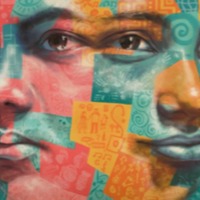
Crystal
Sex trafficking is a form of modern slavery that exists throughout the United States. Traffickers use violence, threats, lies, debt bondage and other forms of coercion to compel adults and children to engage in commercial sex acts against their will. The situations that sex trafficking victims face vary, many victims become romantically involved with someone who then forces them into prostitution. Others are lured with false promises of a job, and some are forced to sell sex by members of their own families. Victims of sex trafficking include both foreign nationals and US citizens, with women making up the majority of those trafficked for the purposes of commercial sexual exploitation. In 2015, the most reported venues/industries for sex trafficking included commercial-front brothels, hotel/motel-based trafficking, online advertisements with unknown locations, residential brothels, and street-based sex trafficking. Crystal grew up in a dysfunctional and abusive household. Having been sexually assaulted from a young age, Crystal points to her childhood experiences as the source of her vulnerability. It was as an adult that Crystal was trafficked for commercial sexual exploitation by her second husband who exploited her drug addictions and forced her to sleep with other women for money. Though she was able to escape her husband, the cycle of trafficking continued. It was after her arrest and the subsequent loss of her son to child services that Crystal was able to break the cycle and escape, going back to school and regaining custody of her son.
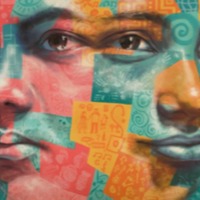
Shenli
Lin Shenli was sentenced to 18 months of “reeducation through labor” in a Chinese prison camp on January 23, 2000 for taking part in illegal Falun Gong activities. He was released in January 2002, after two years in the labor camp. Unknown numbers of people have been held as slave laborers in China’s “Laogai” (labor reform camps). Created by the Chinese Communist Party under Mao Zedong, the Laogoi system was intended to “reeducate criminals” and has long used prisoners as a source of cheap labor. Labor and pro-democracy activists have been targeted for Laogai imprisonment.
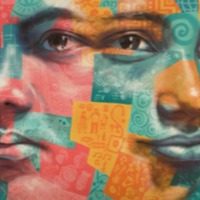
Masha (Narrative 2)
Masha was trafficked to Germany from Russia and enslaved in sex work when she was 24 years old. She was kept prisoner and her passport was withheld from her to prevent her from escaping, but was later arrested in a police raid, which gave her the opportunity to return to Russia. Masha recalls that the German police did not try to understand her situation but simply treated her as a criminal. Another narrative from Masha is available in the archive.
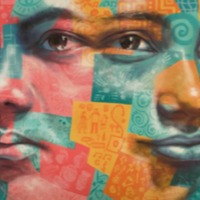
Irina V.
Irina V. was trafficked into Germany from Russia, where traffickers abduct an estimated 55,000 women each year. She was taken along the so-called “Eastern Route” through Poland. This is a key overland corridor for trafficking women into the EU from Russia, Ukraine, Romania, and the Baltics. Her narrative grapples with the fact that her enslavers “continue to traffic women” and also outlines a more practical problem. Upon her escape, she “began a long, terrible process of multiple questionings and misunderstandings,” was placed in prison for three months, and only received assistance from an NGO.
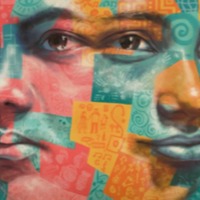
Alina
Born in Armenia, Alina was promised work in Greece but instead trafficked to the United Arab Emirates (UAE) where an estimated 10,000 women from sub-Saharan Africa, Eastern Europe, South and East Asia, Iraq, Iran, and Morocco are victims of sex trafficking. Women from Uzbekistan, Kyrgyzstan, Ukraine, Russia, Kazakhstan, Armenia, Azerbaijan, Ethiopia, Eritrea, Somalia, Uganda, India, Pakistan, Afghanistan, China, the Philippines, Iraq, Iran, and Morocco are reportedly trafficked to the UAE. for commercial sexual exploitation. Some foreign women were reportedly recruited to work as secretaries or hotel workers by third country recruiters, but were coerced into prostitution or domestic servitude.
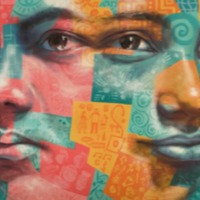
Ada
Born in Albania, Ada was trafficked into Italy, where trafficking victims also arrive from Nigeria, Romania, Bulgaria, China, and South America. One NGO estimates that 48 percent of the prostitutes in Italy are from Eastern Europe. Many women are trafficked into richer Western European countries from the poorer Eastern countries, including Albania. The fall of communism in 1991 led to a rise in organized crime in Albania: in 2001 it was estimated 100,000 Albanian women and girls had been trafficked to Western European and other Balkan countries in the preceding ten years. More than 65 percent of Albanian sex-trafficking victims are minors at the time they are trafficked, and at least 50 percent of victims leave home under the false impression that they will be married or engaged to an Albanian or foreigner and live abroad. Another ten percent are kidnapped or forced into prostitution. The women and girls receive little or no pay for their work,and are commonly tortured if they do not comply.
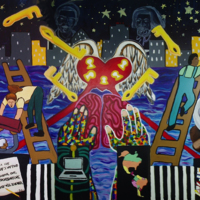
Picturing Our Dreams
Picturing Our Dreams is by incarcerated youth at the Monroe Correctional Facility in Rochester, New York. The mural was created in collaboration with a New York State Library Centre writer, visual artist and Rochester School District teachers. The ideology behind the mural was that inmates could communicate the idea that there is freedom and knowledge inside the jail system. In the centre of the mural, a heart with many key-holes floats around the corresponding keys, and above are the faces of the abolitionists Harriet Tubman and Frederick Douglass, as well as Barack Obama and Dr. Martin Luther King Jr.
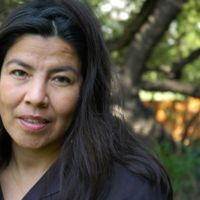
Maria Suarez
Maria Suarez marks the turning-point in her decades-long journey from slavery to freedom as the moment when a bird knocked at her window. She had no idea she about to be freed, but when the bird came she knew that she “was going to have some good news.” She waited, and minutes later officials told her she was going to be free. At the age of 15, in 1976, Maria immigrated legally to the US from Michoacan, Mexico, with her father. She was soon approached on the street in Los Angeles by a woman offering work as a cleaner. But instead the woman sold her to 68-year-old Anselmo Covarrubias for $200, and Covarrubias made her his domestic slave. For five years he held her in bondage in his house in the Los Angeles suburb of Azusa, raped and beat her, and threatened her with black arts wizardry. Maria believed that he read her mind, possessed her soul, and would hurt her family if she told anyone about the abuse. In August 1981, Covarrubias was bludgeoned to death with a table leg by Pedro Soto, who was renting a converted garage on the property. Maria washed the weapon and hid it under the house, as directed by Soto. She was arrested, along with Soto and his wife. Soto was convicted of first-degree murder, and his wife was convicted of soliciting murder and being an accessory to a felony. Maria was convicted of conspiracy to commit murder, sentenced to 25 years to life, and incarcerated at the California Institution for Women in Corona. Officials eventually confirmed that she suffered from battered woman’s syndrome — allowed as a legal defense in California after in 1992 — and she was paroled in 2003, after five years in slavery, and 22.5 years in prison. But Maria still wasn’t free: according to federal law, non-citizens convicted of violent crimes must be deported upon their release, and she was taken directly to a federal detention facility. She spent more than five months fighting deportation, then was certified as a trafficking victim eligible for a T-visa—a new status for victims of slavery and trafficking in the US. She was freed in May 2004.